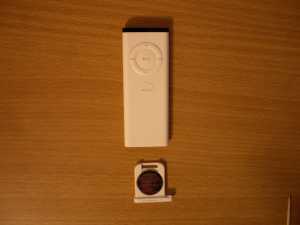18 Jun Both Honey and Carafate® May Slow Damage to Esophagus from Button Battery Ingestion
MedicalResearch.com Interview with:
Kris R. Jatana, MD, FAAP, FACS
Associate Professor
Director, Pediatric Otolaryngology Quality Improvement
Department of Otolaryngology-Head & Neck Surgery
Nationwide Children’s Hospital & Wexner Medical Center
at Ohio State University
MedicalResearch.com: What is the background for this study?
Response: More than 2,500 pediatric button battery ingestions occur annually in the United States. When lodged in the esophagus, rapid injury can occur from the tissue and saliva connecting the circuit of the battery. Serious injury can occur in a matter of hours. This results in a highly alkaline caustic injury that dissolves tissue, a process called liquefactive necrosis. There was a need for novel mitigation strategies to slow the progression of esophageal injury caused by presence of a button battery. This study aimed at identifying a palatable liquid that can be given at home or hospital setting to reduce esophageal injury until the battery can be removed.
MedicalResearch.com: What are the main findings?
Response: Both honey and sucralfate (Carafate®) significantly slowed the rate of esophageal injury in both a cadaveric and live animal model compared to controls.
MedicalResearch.com: What should readers take away from your report?
Response: As a result of this study, the pre-battery removal use of honey or sulcrafate (Carafate®) were incorporated in to the latest National Capital Poison Center Battery Ingestion Guidelines, available online:
https://www.poison.org/battery/guideline
MedicalResearch.com: What recommendations do you have for future research as a result of this work?
Response: The development of non-invasive, early-detection screening methods of esophageal button batteries is already underway at Nationwide Children’s Hospital and Ohio State University.
MedicalResearch.com: Is there anything else you would like to add?
Response: Button batteries are commonly found in households, and they should always be stored in a secured container, out of reach of children. Parents and caregivers should check all electronic products in the home and make certain that the battery is enclosed in a compartment that requires a tool to open and periodically check to ensure it stays secure over time.
Disclosures: Kris Jatana, MD serves as a general product safety medical consultant for Intertek Inc., provides expert witness testimony, and receives royalties for a patented medical device, unrelated and not utilized in this study from Marpac Inc. He serves in a leadership position on the National Button Battery Task Force, affiliated with the American Academy of Pediatrics and American Broncho-Esophagological Association.
Citation:
pH‐neutralizing esophageal irrigations as a novel mitigation strategy for button battery injury
Rachel R. Anfang MA ,Kris R. Jatana MD ,Rebecca L. Linn MD ,Keith Rhoades BS
Jared Fry BS, Ian N. Jacobs MD
First published: 11 June 2018
[wysija_form id=”3″]
The information on MedicalResearch.com is provided for educational purposes only, and is in no way intended to diagnose, cure, or treat any medical or other condition. Always seek the advice of your physician or other qualified health and ask your doctor any questions you may have regarding a medical condition. In addition to all other limitations and disclaimers in this agreement, service provider and its third party providers disclaim any liability or loss in connection with the content provided on this website.
Last Updated on June 18, 2018 by Marie Benz MD FAAD

